Abstract
The rate of regeneration of protochlorophyllide650 was examined spectrophotometrically after a saturating light flash using 8- to 9-day-old dark-grown bean leaves. The regeneration occurred to the extent of 15% with a half rise time of about 20 seconds. Feeding δ-aminolevulinic acid to the excised leaves in the dark increased protochlorophyllides635 but not the absorption at 650 nanometers, suggesting that the holochrome was normally saturated with protochlorophyllide and that the holochrome protein was not controlled by the level of protochlorophyllide. After a light flash, the excess protochlorophyllide, formed from exogenous δ-aminolevulinic acid, readily combined to regenerate the 650 nanometer absorbing species; the regeneration occurred to the extent of 60 to 80% with a half rise time of about 50 seconds. Regeneration was blocked at 0°, suggesting that there was some enzymic process required for regeneration, possibly the formation of a reductant component of the protochlorophyllides650 holochrome.
Full text
PDF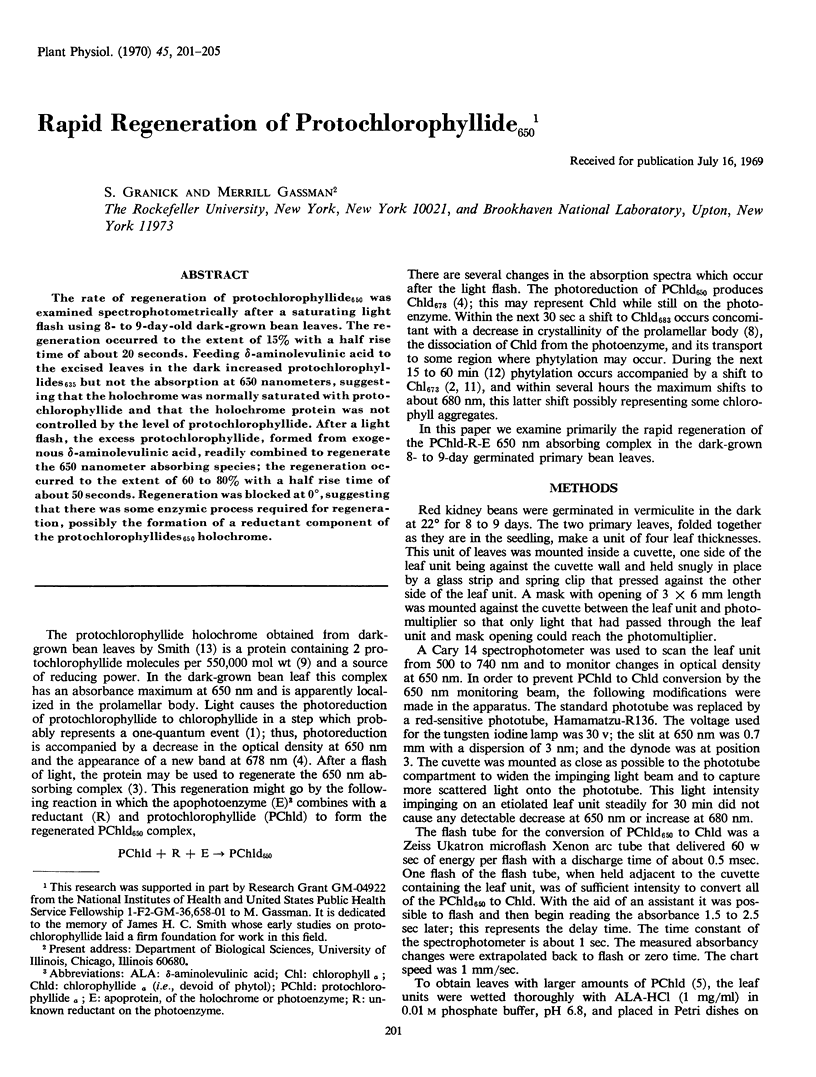
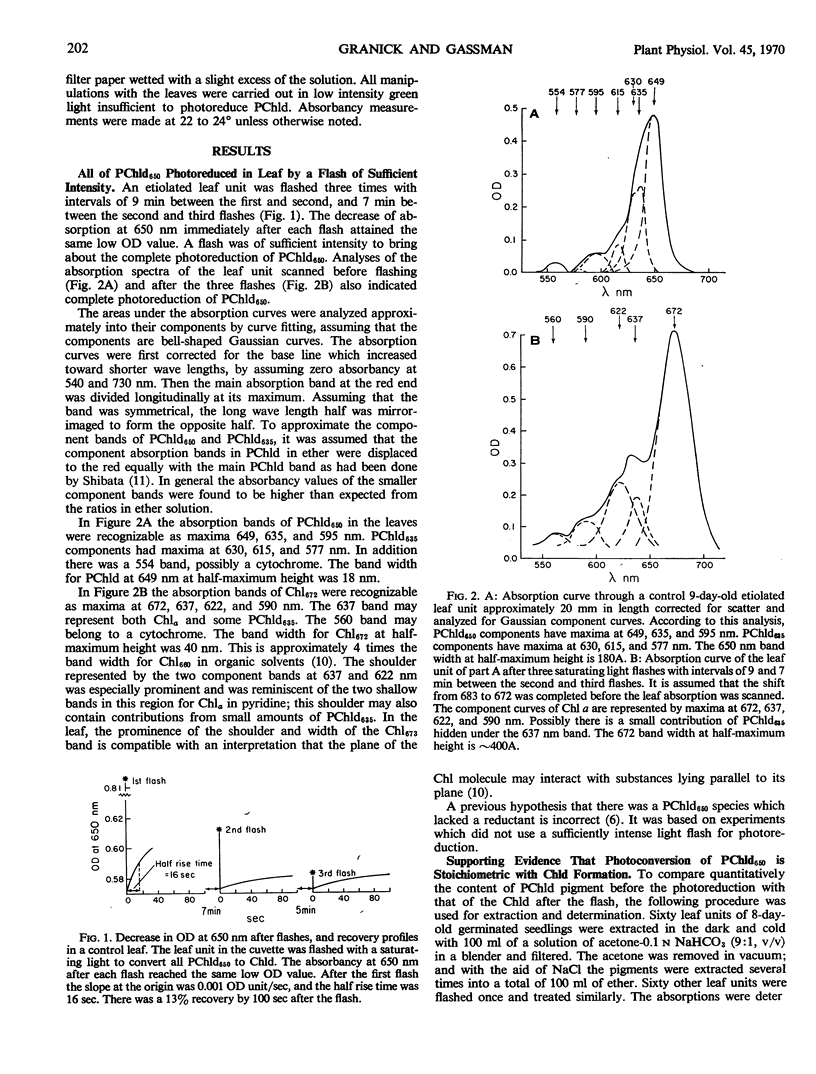
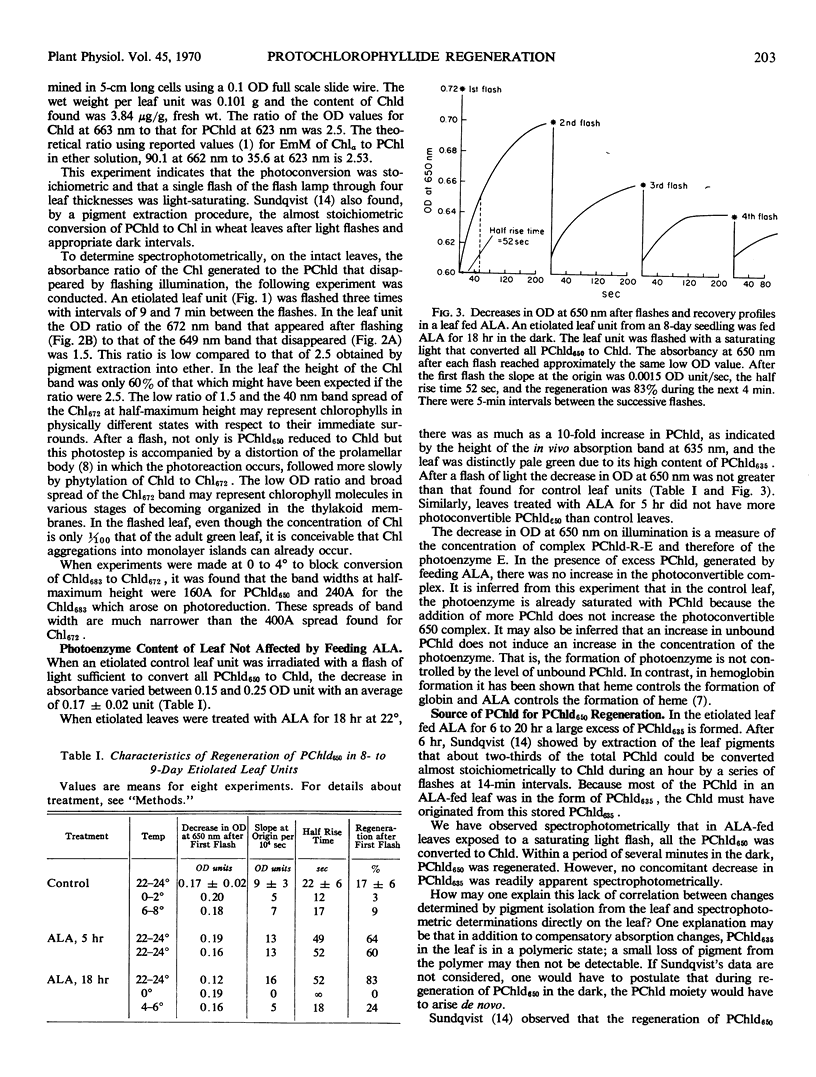
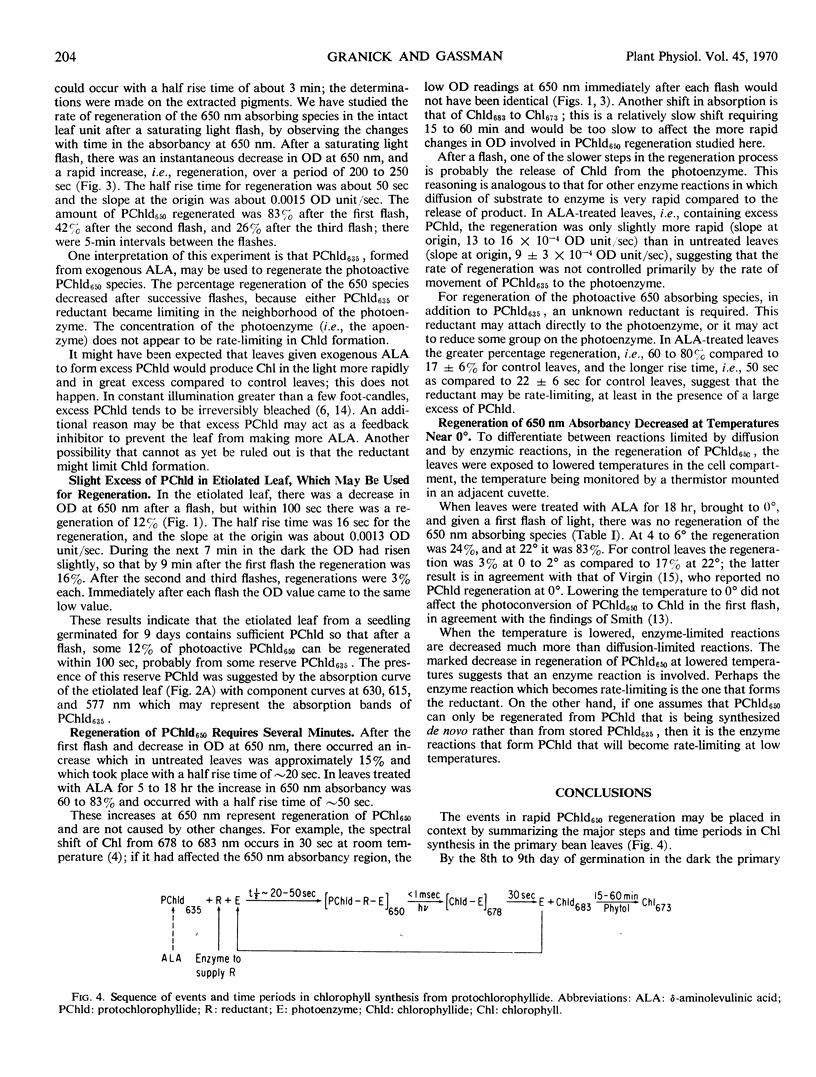
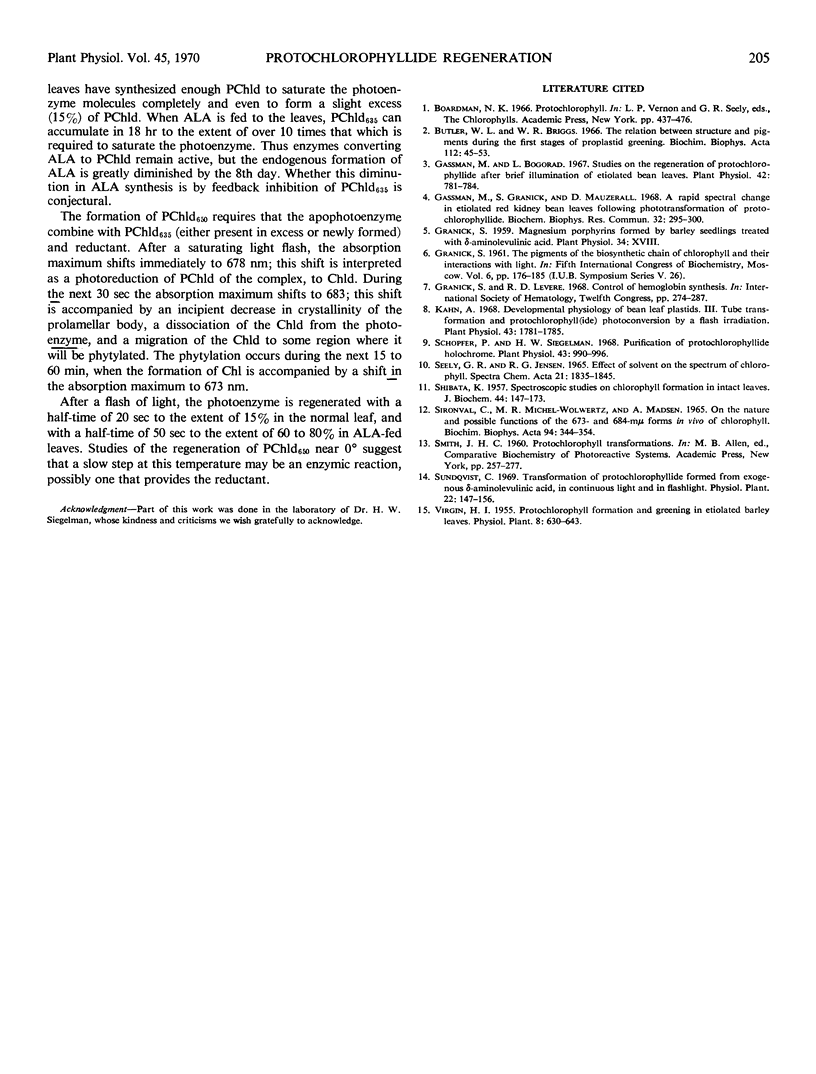
Selected References
These references are in PubMed. This may not be the complete list of references from this article.
- Butler W. L., Briggs W. R. The relation between structure and pigments during the first stages of proplastid greening. Biochim Biophys Acta. 1966 Jan 4;112(1):45–53. doi: 10.1016/s0926-6585(96)90006-0. [DOI] [PubMed] [Google Scholar]
- Gassman M., Bogorad L. Studies on the regeneration of protochlorophyllide after brief illumination of etiolated bean leaves. Plant Physiol. 1967 Jun;42(6):781–784. doi: 10.1104/pp.42.6.781. [DOI] [PMC free article] [PubMed] [Google Scholar]
- Gassman M., Granick S., Mauzerall D. A rapid spectral change in etiolated red kidney bean leaves following phototransformation of protochlorophyllide. Biochem Biophys Res Commun. 1968 Jul 26;32(2):295–300. doi: 10.1016/0006-291x(68)90384-7. [DOI] [PubMed] [Google Scholar]
- Kahn A. Developmental Physiology of Bean Leaf Plastids III. Tube Transformation and Protochlorophyll (ide) Photoconversion by a Flash Irradiation. Plant Physiol. 1968 Nov;43(11):1781–1785. doi: 10.1104/pp.43.11.1781. [DOI] [PMC free article] [PubMed] [Google Scholar]
- SIRONVAL C., MICHEL-WOLWERTZ M. R., MADSEN A. ON THE NATURE AND POSSIBLE FUNCTIONS OF THE 673- AND 684-MU FORMS IN VIVO OF CHLOROPHYLL. Biochim Biophys Acta. 1965 Mar 29;94:344–354. doi: 10.1016/0926-6585(65)90043-9. [DOI] [PubMed] [Google Scholar]
- Schopfer P., Siegelman H. W. Purification of protochlorophyllide holochrome. Plant Physiol. 1968 Jun;43(6):990–996. doi: 10.1104/pp.43.6.990. [DOI] [PMC free article] [PubMed] [Google Scholar]


